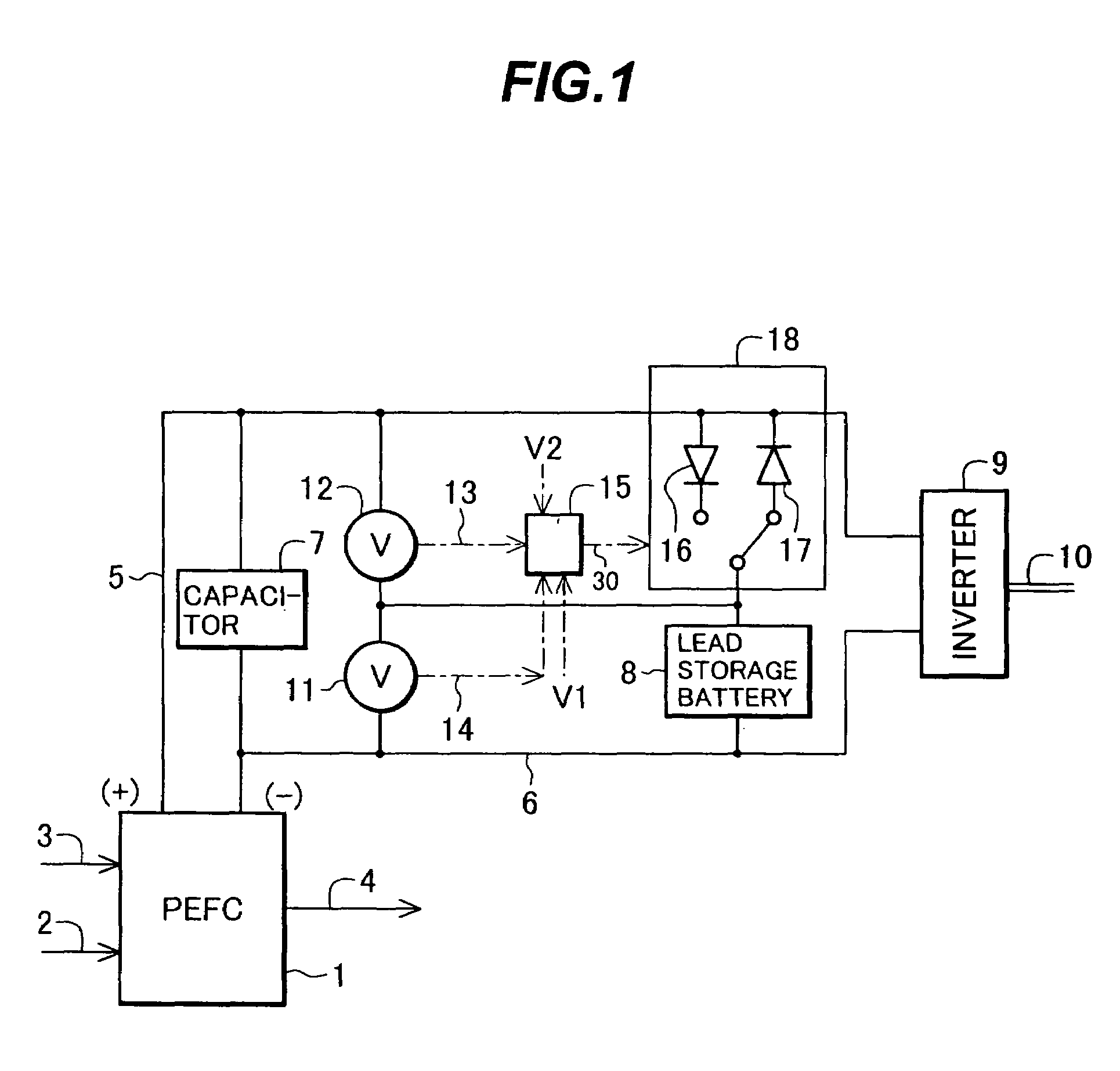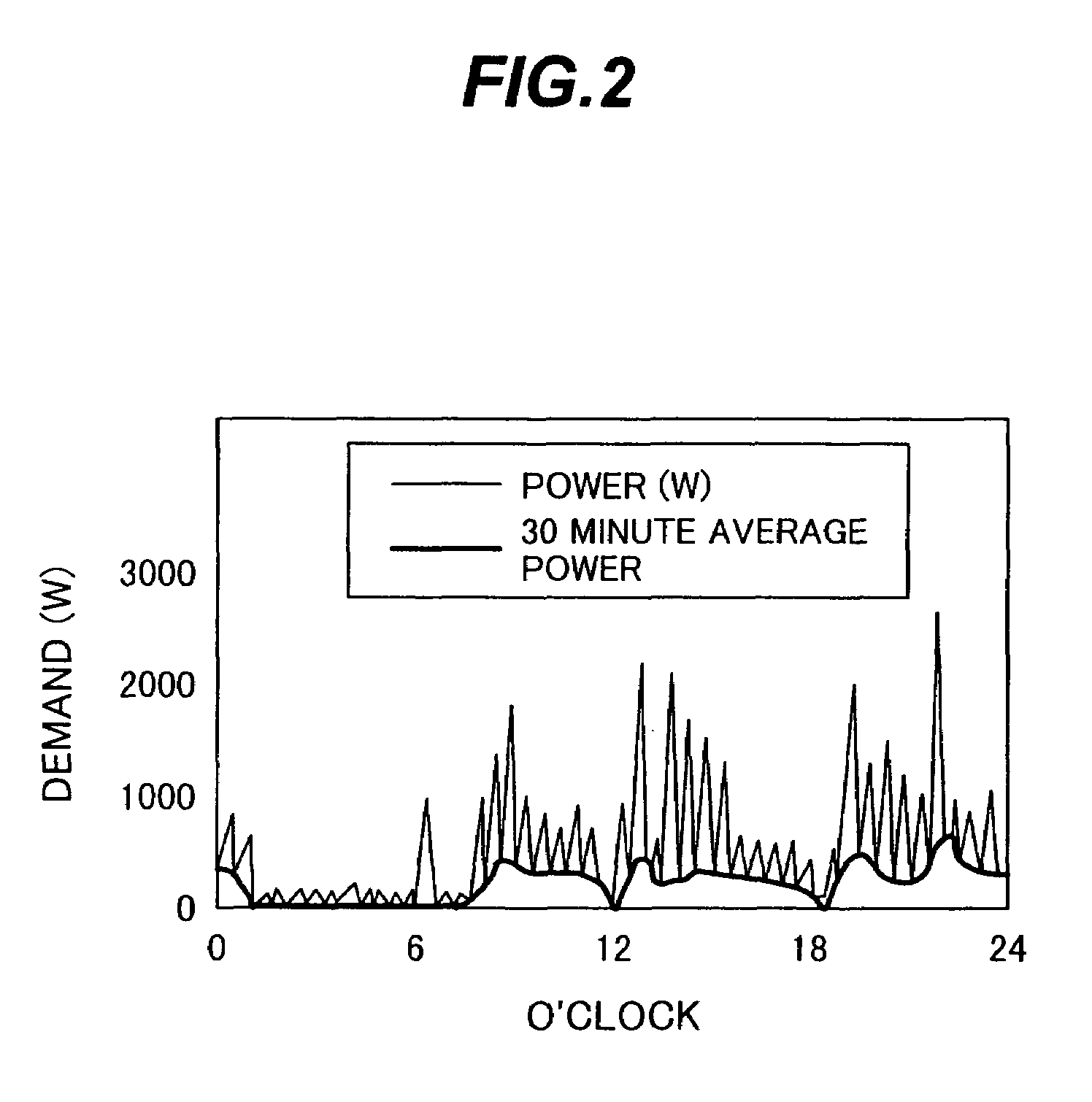Home-use fuel cell system
- Summary
- Abstract
- Description
- Claims
- Application Information
AI Technical Summary
Benefits of technology
Problems solved by technology
Method used
Image
Examples
Embodiment Construction
[0031]Hereinafter, an embodiment according to the present invention will be described with reference to the drawings. FIG. 1 is a schematic diagram showing the outline of the construction of an entire home-use fuel cell system (power supply system using a fuel cell) according to this embodiment of the present invention.
[0032]In FIG. 1, the power supply system using a fuel cell comprises a fuel cell that generates direct current power by a reformed fuel containing much hydrogen portion (hereinafter referred to as “hydrogen rich gas”) 3 and air 2, and that is preferably a solid polymer electrolyte fuel cell (hereinafter referred to as a “PEFC” as appropriate) 1; a capacitor that is connected in parallel with a cathode 5 and anode 6 of the PEFC 1, that charges therein a portion of the output of the PEFC 1 when a power demand is smaller than the output of the PEFC 1, that discharges it when the power demand is larger than the output of the PEFC 1, and that is preferably electric double ...
PUM
 Login to View More
Login to View More Abstract
Description
Claims
Application Information
 Login to View More
Login to View More - R&D
- Intellectual Property
- Life Sciences
- Materials
- Tech Scout
- Unparalleled Data Quality
- Higher Quality Content
- 60% Fewer Hallucinations
Browse by: Latest US Patents, China's latest patents, Technical Efficacy Thesaurus, Application Domain, Technology Topic, Popular Technical Reports.
© 2025 PatSnap. All rights reserved.Legal|Privacy policy|Modern Slavery Act Transparency Statement|Sitemap|About US| Contact US: help@patsnap.com



